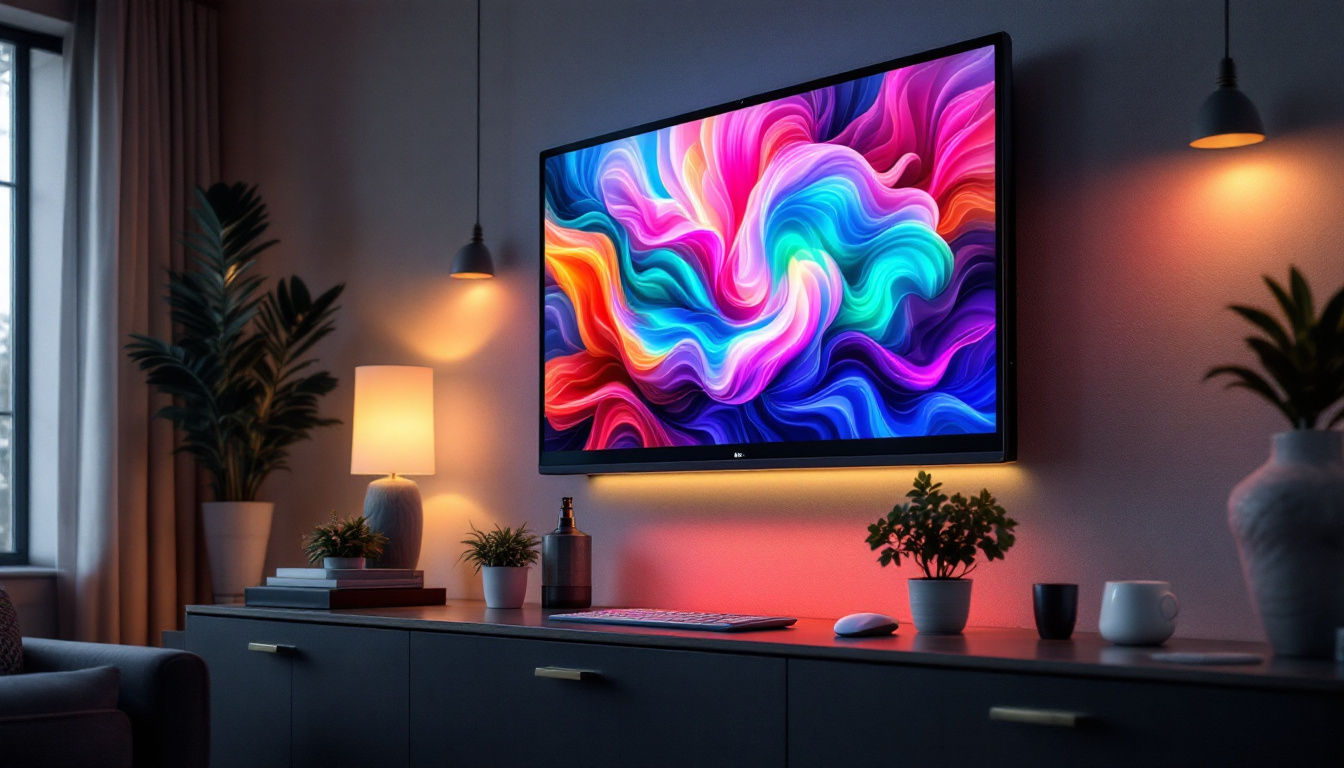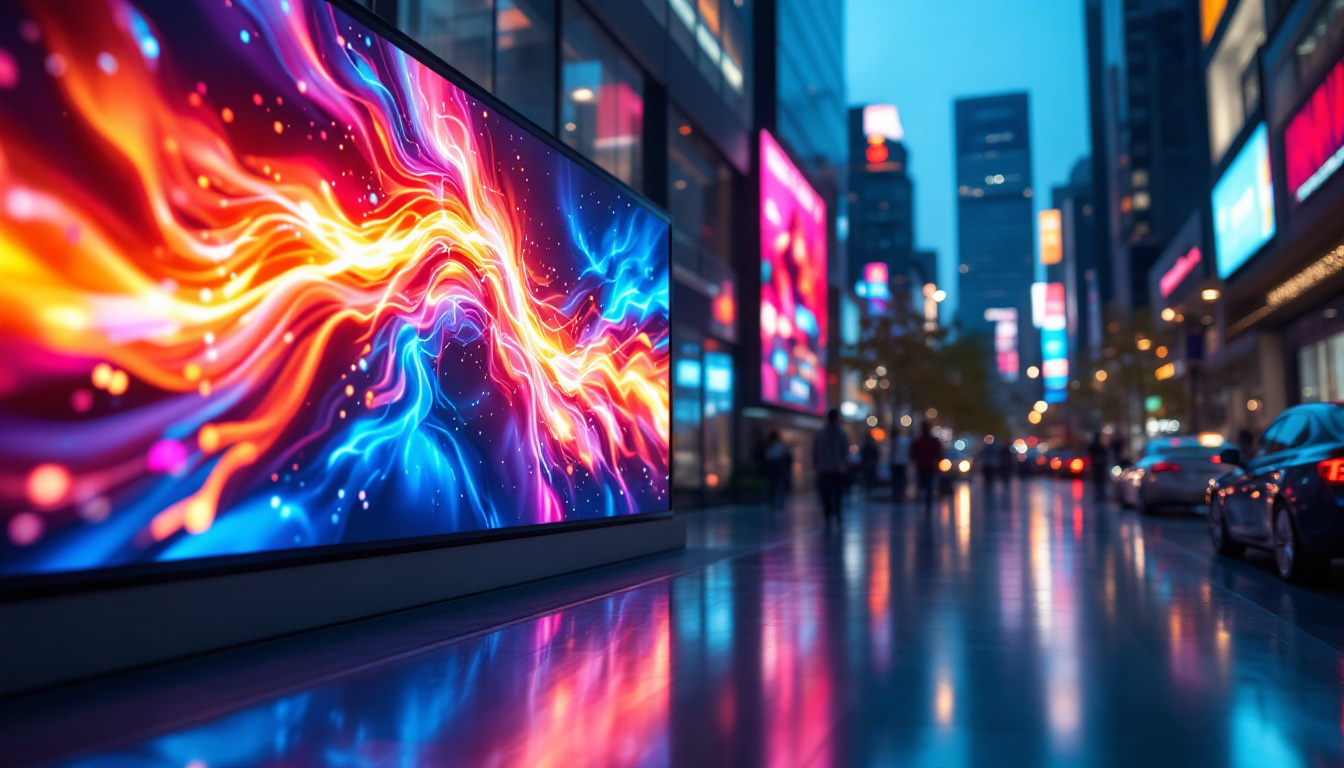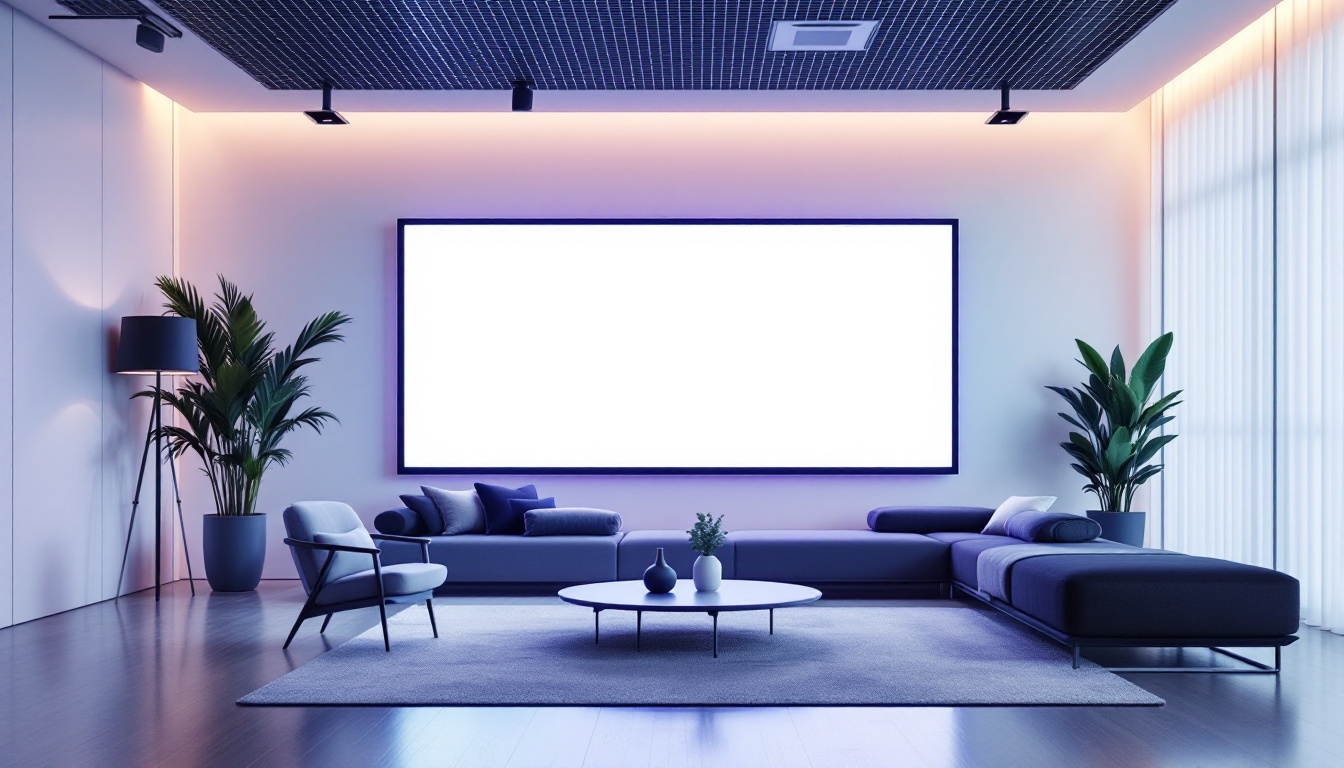In today’s digital age, LCD monitors are ubiquitous, providing users with vibrant displays for everything from gaming to professional work. However, like all technology, they can encounter issues that require repair. This article delves into understanding LCD monitors, the role of LED displays, and how to find reliable repair services near you.
Understanding LCD Monitors
Liquid Crystal Display (LCD) monitors have revolutionized the way we interact with visual content. Unlike traditional cathode ray tube (CRT) monitors, LCDs are lightweight and consume less power, making them a popular choice for both personal and professional use. Their sleek design and ability to fit into modern aesthetics have contributed to their widespread adoption in homes, offices, and public spaces alike. Furthermore, advancements in technology have allowed for larger screen sizes and higher resolutions, enhancing the viewing experience for everything from gaming to graphic design.
How LCD Technology Works
At the core of an LCD monitor is a liquid crystal solution sandwiched between two layers of glass. When an electric current is applied, the crystals align in such a way that they either block or allow light to pass through. This process is what creates the images we see on the screen. The precision of this alignment is crucial for achieving sharp images and vibrant colors, which is why manufacturers invest heavily in developing high-quality liquid crystals and advanced manufacturing techniques.
Additionally, LCD monitors require a backlight to illuminate the display. This is where LED (Light Emitting Diode) technology comes into play, enhancing the overall performance and efficiency of the monitor. LED backlighting not only improves brightness and color accuracy but also enables thinner designs, allowing for ultra-slim monitors that save space and energy. As a result, many modern LCD monitors now feature technologies such as local dimming and HDR (High Dynamic Range) to further enhance contrast and color depth, making them ideal for multimedia consumption.
Common Issues with LCD Monitors
Despite their advantages, LCD monitors are not immune to problems. Common issues include dead pixels, flickering screens, and color distortion. Understanding these problems can help users identify when it might be time to seek repair services. Regular maintenance and proper handling can often mitigate these issues, prolonging the life of the monitor and ensuring optimal performance.
Dead pixels, for instance, occur when a pixel fails to display any color, resulting in a noticeable black dot on the screen. These can be particularly frustrating for users who rely on their monitors for detailed work, such as graphic design or video editing. Flickering can be caused by a variety of factors, including a faulty graphics card or loose connections, while color distortion often points to issues with the monitor’s settings or hardware. Users experiencing these problems may find it beneficial to recalibrate their monitors or check for software updates that could resolve compatibility issues. Additionally, understanding warranty options and repair services can provide peace of mind for those concerned about potential defects or malfunctions in their LCD monitors.
The Role of LED Displays in LCD Technology
LED technology has significantly improved the performance of LCD monitors. By using LEDs as a backlight source, manufacturers have been able to enhance brightness, contrast, and energy efficiency.
Types of LED Backlighting
There are two main types of LED backlighting used in LCD monitors: edge-lit and full-array. Edge-lit LED displays have LEDs positioned around the edges of the screen, allowing for a thinner design but sometimes resulting in uneven lighting. In contrast, full-array LED displays have a grid of LEDs behind the screen, providing more uniform brightness and better contrast ratios. The choice between these two types often comes down to the specific needs of the user; for instance, gamers and graphic designers may prefer full-array displays for their superior color depth and consistency, while casual users might opt for edge-lit models due to their sleek design and lower price point.
Benefits of LED Displays
LED displays offer several advantages over traditional LCDs. They tend to have better color accuracy, faster response times, and lower energy consumption. This makes them ideal for a variety of applications, from professional graphic design to casual gaming. Moreover, the rapid advancements in LED technology have led to innovations such as local dimming, which allows for greater control over brightness levels in different areas of the screen, enhancing the viewing experience even further.
Furthermore, the longevity of LED backlighting means that users can expect their monitors to last longer without requiring replacement, adding to the overall value of the investment. In addition to their durability, LED displays are also more environmentally friendly than their predecessors, as they consume less power and contain fewer hazardous materials. This shift towards sustainability is becoming increasingly important in today’s tech landscape, where both consumers and manufacturers are more conscious of their ecological footprint. As a result, the adoption of LED technology not only benefits individual users but also contributes positively to global environmental efforts.
Identifying When to Seek Repair Services
Knowing when to seek professional help for an LCD monitor can save time and money. Many users may attempt to troubleshoot minor issues themselves, but some problems require expert intervention.
Signs Your Monitor Needs Repair
There are several signs that indicate a monitor may need repair. If the screen displays persistent flickering, unusual colors, or black spots, it may be time to consult a professional. Additionally, if the monitor fails to power on or frequently loses connection, these are clear indicators of underlying issues.
It is also wise to consider the age of the monitor. Older models may not only be more prone to problems but could also be less efficient compared to newer models. In such cases, repair may not be the most cost-effective solution.
DIY Troubleshooting Tips
Before seeking professional help, users can attempt some basic troubleshooting. Checking the connections, ensuring the power source is functioning, and adjusting display settings can resolve minor issues. Additionally, updating graphics drivers can sometimes rectify display problems.
However, if these steps do not yield results, it is advisable to seek professional repair services to avoid further damage.
Finding Reliable LCD Monitor Repair Services
When faced with a malfunctioning LCD monitor, finding a reliable repair service is crucial. With numerous options available, it can be challenging to determine which service is best suited for your needs.
Researching Local Repair Options
Start by researching local repair shops that specialize in LCD monitors. Online reviews and ratings can provide insight into the quality of service offered. Websites like Yelp or Google Reviews can help identify reputable businesses in your area.
Additionally, asking friends or colleagues for recommendations can lead to trustworthy repair services. Personal experiences often provide valuable information about the reliability and efficiency of a repair shop.
Evaluating Repair Services
Once potential repair services have been identified, evaluate them based on several factors. Consider the experience of the technicians, the types of repairs they offer, and their turnaround times. A good repair service should provide a clear estimate of costs and a warranty on their work.
Furthermore, inquire about their policies regarding data protection, especially if the monitor is connected to a computer containing sensitive information. Ensuring that your data remains secure during the repair process is paramount.
Cost of LCD Monitor Repairs
The cost of repairing an LCD monitor can vary widely based on the nature of the problem and the specific repair service. Understanding potential costs can help users budget appropriately.
Factors Influencing Repair Costs
Several factors influence the cost of LCD monitor repairs. The type of issue, the age of the monitor, and the availability of replacement parts can all affect pricing. For instance, replacing a simple component like a power supply may be less expensive than fixing a cracked screen.
Additionally, labor costs can vary between repair services. Some shops may charge a flat fee, while others may bill hourly. It is essential to clarify these details before committing to a repair.
Cost-Effective Alternatives
In some cases, it may be more cost-effective to replace the monitor rather than repair it, especially if the repair costs approach or exceed the price of a new unit. Evaluating the overall condition of the monitor and considering its age can help determine the best course of action.
For users who frequently encounter issues, investing in a high-quality monitor with a warranty might be a more prudent choice, ensuring peace of mind and reducing the likelihood of future repairs.
Preventative Measures for LCD Monitors
Taking steps to maintain an LCD monitor can prolong its lifespan and reduce the likelihood of needing repairs. Simple preventative measures can make a significant difference.
Regular Cleaning and Maintenance
Keeping the monitor clean is essential for optimal performance. Dust and grime can accumulate on the screen and within the vents, leading to overheating and image distortion. Regularly using a microfiber cloth to wipe the screen and ensuring proper ventilation can help maintain the monitor’s condition.
Additionally, avoiding exposure to direct sunlight and extreme temperatures can prevent damage to the internal components of the monitor.
Using Surge Protectors
Power surges can cause significant damage to electronic devices, including LCD monitors. Utilizing surge protectors can safeguard against unexpected spikes in electricity, reducing the risk of damage.
Furthermore, ensuring that the monitor is connected to a stable power source can help maintain its performance and longevity.
Conclusion
Understanding the intricacies of LCD monitors and the role of LED displays is essential for any user. Recognizing when to seek repair services and knowing how to find reliable options can save both time and money. By taking preventative measures, users can extend the lifespan of their monitors and enjoy uninterrupted viewing experiences.
Whether it’s a simple fix or a more complex issue, being informed about the technology behind LCD monitors and the available repair options is crucial in today’s digital landscape. With the right knowledge and resources, users can ensure their monitors remain in top condition for years to come.
Explore Cutting-Edge LED Display Solutions with LumenMatrix
If you’re looking to elevate your visual experience or require a reliable repair for your LCD monitor, look no further than LumenMatrix. As a pioneer in LED display technology, we offer an extensive range of innovative solutions tailored to meet your needs. From Indoor and Outdoor LED Wall Displays to specialized options like Vehicle, Sports, and Floor LED Displays, our mission is to transform your visual communication with clarity and impact. Don’t let a malfunctioning monitor disrupt your digital life. Check out LumenMatrix LED Display Solutions today and step into a world of vibrant, captivating visuals designed to engage and inspire.































